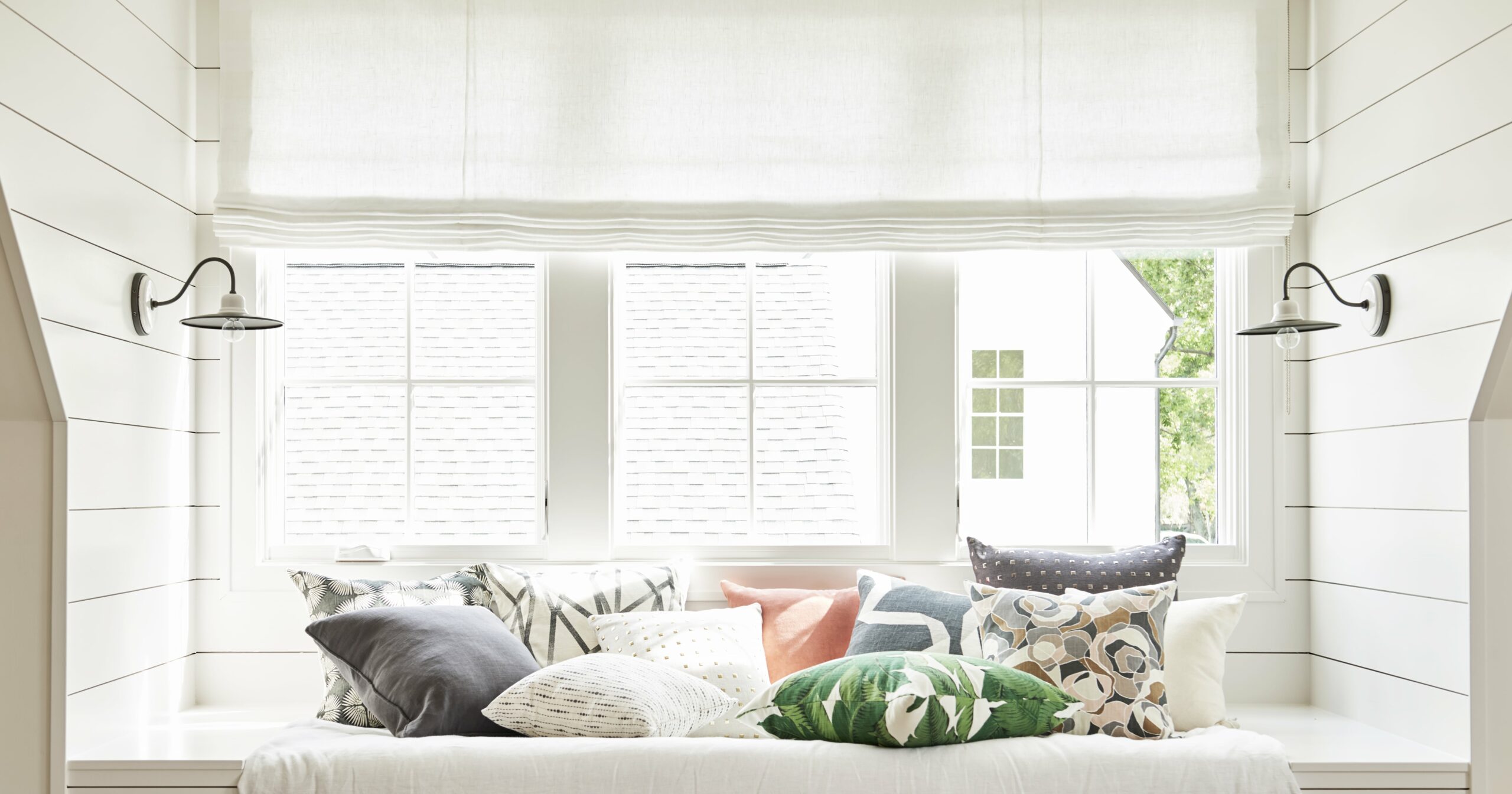Shopping for new curtains alone, without a consultation, can feel daunting. If you’re not well-versed in interior design and you don’t tend to luck out when it comes to choosing decor on a whim, the options feel endless. That’s why we’re here to break down the basics for an easy shopping experience – whether you’re a drapery newbie or veteran. Lisa Van is a Loom Decor stylist who knows her window treatment ABCs, to put it simply, and she’s helped us put together a guide that’s easy to digest and every bit enlightening.
Some basic shopping advice to get you started? Drapery fabric preference is entirely up to you, but it’s best to use a light- to medium-weight material to avoid bulky looking windows that distract from the rest of your space. To determine what’s most fitting, Van suggests analyzing the room to digest paint color and cohesive furniture tones. “Some people like picking neutral colors that complement their paint color so they know they will love the drapery for years to come,” she says, recommending to select what you truly love, not what you’ve heard is trending. “Drapery is made to last for years and years, so I would pick something you know you’ll love coming home to every day.”
Ahead, learn all there is to know about curtains, drapes, and shades, then shop some bestsellers.
What’s the Difference Between Curtains, Drapes, and Shades?
Curtains and drapery are actually used interchangeably, meaning that they are essentially one and the same. Van explains that drapery is considered to be a more industry term, referring to fabric panels that are hung outside of the window frame and usually mounted on some sort of hardware. By framing any window or door space with these panels, you create the illusion of larger windows and achieve a more high-end feel.
Shades, on the other hand, can refer to Roman shades, woven wood shades, blinds, honeycomb shades, and more. They are either mounted above or within the window encasement, made from a flat piece of fabric that can be operated with a cord, chain loop, or cordless mechanism. These are the go-to for any space that calls for clean coverage without bulky drapery involved.
How to Choose the Right Curtain Size
Van says that the general rule of thumb is to mount curtain hardware two to three inches below your ceiling or crown molding. And for the “stack” (aka how far the rod extends on the left and right sides of the window), she suggests eight to 10 inches on each side. As for the drapery itself, it should just graze the floor, or stop one quarter-inch above it.
“At Loom Decor, we recommend measuring the width of your window and extending the drapery rod eight to 15 inches to the left and right sides of the window,” Van says, summarizing that you’ll be ordering a curtain sized equal to the width of your window plus the additional eight to 15 inches on either side for the rod. “For the panel length, we recommend mounting your hardware about five to 15 inches above the window frame to elongate the height of your window. So simply measure from the top of the window frame to the floor, and add five to 15 inches to that amount. If you have more or less space available, we recommend mounting two inches below the ceiling to allow some breathing room for installation.”
How to Hang Curtains Properly
Van says that the act of installing drapery is really not so hard, as long as you’ve measured everything correctly. “I would recommend triple-checking your measurements before installation, ensuring the drapery is just grazing the floor once the hardware is hung up. Make sure your hands are clean when hanging the drapery to avoid smudges or stains,” she says. Post-installation, you can lightly steam your curtains to remove any wrinkles and “train” your curtains to fall with the pleating just as you like.
How to Clean Your Curtains
You’ll have to clean your curtains far less often if you use a drapery wand to open and close them. “This prevents your hands from repeatedly touching the fabric and causing smudges or stains over time,” Van explains. If you do notice stains or smudges on your curtains, you can spot clean with a wet cloth and mild soap, then allow the material to air dry. If you simply feel that your curtains appear lackluster, try steaming them on a light setting for an instant refresh.
Experts Featured in This Article
Lisa Van is a Loom Decor Stylist.




